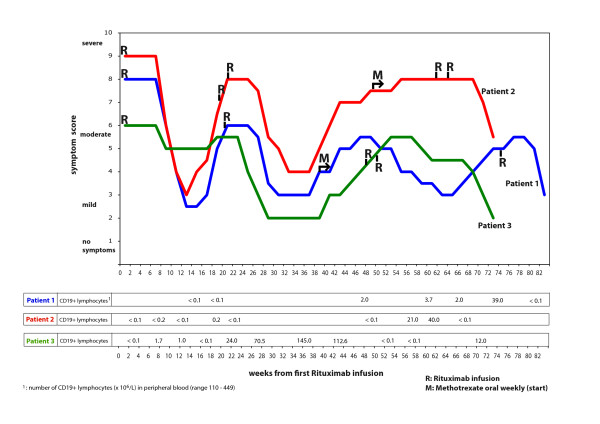Researchers find 'broad spectrum' antiviral that fights multitude of viruses
Compound could be used against HIV-1, Nipah, Ebola and other deadly viruses
By Enrique Rivero February 01, 2010 Category: Health Sciences, Research *
Viruses are insidious creatures. They differ from each other in many ways,
and they can mutate at times seemingly at will, as with HIV to resist a
host of weapons fired at them.
Complicating matters further is that new viruses are constantly emerging. *
One potential weapon is a small-molecule "broad spectrum" antiviral that
will fight a host of viruses by attacking them through some feature common
to an entire class of viruses.
For example, there are two categories of viruses:
lipid-enveloped and
non-enveloped.
Enveloped viruses are surrounded by a membrane that in effect serves as a
mechanism through which a virus inserts its genome into a host cell,
infecting it.
Is there something out there that might disrupt that action in as many
viruses as possible and not produce unwanted side effects? *
A group of researchers led by a team from UCLA and including others from the
University of Texas at Galveston, Harvard University, Cornell University and
the United States Army Medical Research Institute of Infectious Diseases may
have found just such a compound. *
In a proof-of-principle study published online in Proceedings of the
National Academy of Sciences, the researchers have identified an antiviral
small molecule that is effective against numerous viruses, including HIV-1,
influenza A, filoviruses, poxviruses, arenaviruses, bunyaviruses,
paramyxoviruses and flaviviruses.
These viruses cause some of the world's deadliest diseases, such as AIDS,
Nipah virus encephalitis, Ebola, hemorrhagic fever and Rift Valley fever. *
Even better, the compound a rhodanine derivative that the researchers have dubbed
LJ001 could be effective against new, yet-to-be discovered enveloped viruses. * *
"Since the government has changed its priorities to support development of
broad spectrum therapeutics, more and more groups have been screening
compound libraries for antivirals that are active against multiple viruses
in a specific class," said
Dr. Benhur Lee, associate professor of
microbiology, immunology and molecular genetics at the David Geffen School
of Medicine at UCLA and the primary investigator of the four-year study. *
U.S. Food and Drug Administrationapproved broad spectrum antivirals do
exist but are rare, for various reasons.
Ribavirin, for instance, affects both the virus proteins and the host cell
and is effective on only a limited number of viruses, such as respiratory
syncytial virus and Lassa fever virus.
And αinterferon, which is used against the hepatitis C virus, produces
unwanted side effects and is too expensive for widespread use. * *
But the putative mechanism for LJ001 is surprising, according to Lee, who is
also a member of the UCLA AIDS Institute. *
"We provide evidence that the small molecule binds to both cellular and
viral membranes, but its preferential ability to inactivate viral membranes
comes from its ability to exploit the biogenic reparative ability of
metabolically active cells versus static viral membranes," he said.
"That is, at antiviral concentrations, any damage it does to the cell's
membrane can be repaired, while
damage done to static
viral membranes, which have no inherent regenerative capacity, is
permanent and irreversible." *
Lee and his collaborators developed their concept of LJ001 as interfering
only with enveloped viruses after testing 23 pathogens in cell culture.
Studies of nine of those agents including Ebola virus, Nipah virus and
Rift Valley fever virus required high- or maximum-containment facilities
and were carried out in the biosafety level 3 and 4 laboratories of the
University of Texas Medical Branch at Galveston (UTMB) and USAMRIID. *
"Once we started testing more and more, we figured out that it was only
targeting the enveloped viruses," said Alexander N. Freiberg, director of
UTMB's Robert E. Shope, M.D., Laboratory. *
The Shope BSL4 lab was also used for mouse experiments with Ebola and Rift
Valley fever virus that further confirmed the protective value of LJ001. *
While the exact mechanism of viral membrane inactivation is unknown, the
researchers are pursuing some promising leads that could answer that
question. *
Additionally, the drug does not appear to be toxic in vitro or in animals
when used at effective antiviral concentrations. *
UCLA has filed for a patent on the use of the compound. *
The study is available in Proceedings of the National Academy of Sciences at
http://www.pnas.org/content/early/2010/01/27/0909587107. *
Other authors are Mike C. Wolf, Tinghu Zhang, Zeynep Akyol-Ataman, Andrew Grock, Patrick W. Hong, Natalya F. Watson, Angela Q. Fang, Hector C. Aguilar, John P. Miller, Steven Chantasirivisal, Vanessa Fontanes, Oscar
Negrete, Robert Damoiseaux, Paul Krogstad, Asim Dasgupta, Kym F. Faull and Michael E. Jung, all of
UCLA;
Alexander N. Freiberg, Sara E. Woodson and Michael R. Holbrook, of the
University of Texas at Galveston;
Jianrong Li and Sean P. Whelan, of
Harvard University;
Matteo Porotto and Anne Moscona, of
Cornell University; and
Anna N. Honko and Lisa E. Hensley, of the
United States Army Medical Research Institute of Infectious Diseases. *
The National Institutes of Health, UCLA CFAR, the Burroughs Wellcome Fund,
the March of Dimes, the California NanoSystems Institute, a UCLA Microbial
Pathogenesis Training Grant, the Warsaw Fellowship Endowment, and a
Rheumatology Training Grant funded this research. *
The UCLA AIDS Institute, established in 1992, is a multidisciplinary think
tank drawing on the skills of top-flight researchers in the worldwide fight
against HIV and AIDS, the first cases of which were reported in 1981 by UCLA physicians.
Institute members include researchers in virology and immunology, genetics,
cancer, neurology, ophthalmology, epidemiology, social science, public
health, nursing, and disease prevention.
Their findings have led to advances in treating HIV, as well as other
diseases, such as hepatitis B and C, influenza and cancer. *
For more news, visit the UCLA Newsroom*and follow us on Twitter. *
http://newsroom.ucla.edu/portal/ucla/researchers-find-broad-spectrum-153297.
aspx *
*

